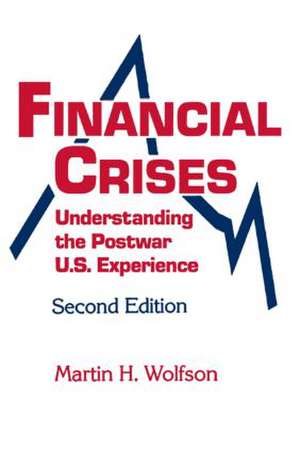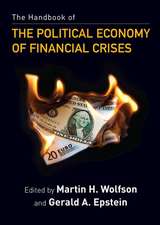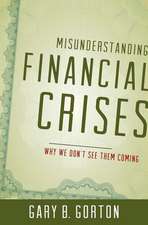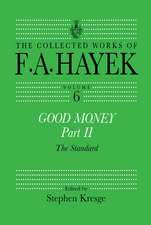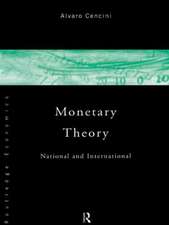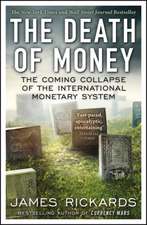Financial Crises: Understanding the Postwar U.S. Experience
Autor M.H. Wolfsonen Limba Engleză Paperback – 30 noi 1994
Preț: 487.37 lei
Nou
Puncte Express: 731
Preț estimativ în valută:
93.26€ • 97.63$ • 77.16£
93.26€ • 97.63$ • 77.16£
Carte tipărită la comandă
Livrare economică 05-19 aprilie
Preluare comenzi: 021 569.72.76
Specificații
ISBN-13: 9780873327503
ISBN-10: 0873327500
Pagini: 284
Dimensiuni: 152 x 229 x 22 mm
Greutate: 0.41 kg
Ediția:Revised
Editura: Taylor & Francis
Colecția Routledge
Locul publicării:Oxford, United Kingdom
ISBN-10: 0873327500
Pagini: 284
Dimensiuni: 152 x 229 x 22 mm
Greutate: 0.41 kg
Ediția:Revised
Editura: Taylor & Francis
Colecția Routledge
Locul publicării:Oxford, United Kingdom
Cuprins
List of Tables, List of Figures, Preface to the Second Edition, 1. Introduction, PART I. THE BUSINESS CYCLE AND FINANCIAL CRISES, 2. Cyclical Theories of Financial Crises, 3. Comparison of Cyclical Theories, PART II. FINANCIAL CRISES IN THE POSTWAR U.S. ECONOMY, 4. The Credit Crunch of 1966, 5. 1970: Penn Central, 6. 1974: Franklin National, 7. The Silver Crisis of 1980, 8. The 1982 Crisis, 9. The Legacy of 1982, 10. The Collapse of Speculative Lending and Investment, PART III. UNDERSTANDING THE POSTWAR EXPERIENCE, 11. A Business-Cycle Model of Financial Crises, 12. Evaluating the Business-Cycle Model, 13. Noncyclical Theories ofFinancial Crises, 14. The Changing Financial System, Notes, Selected Bibliography, Index, About the Author,
Notă biografică
Martin H. Wolfson teaches economics at the University of Notre Dame in South Bend, Indiana. He was formerly an economist at the Federal Reserve Board in Washington, D.C. He received the B.A. degree from Swarthmore Col-lege, and did graduate study in economics at Harvard University and The Ameri-can University, where he earned his Ph.D. He is engaged in ongoing research on developments in the financial system.
Descriere
A survey and critique of the major theories of financial crises. This second edition covers the period from 1985 and the stock market crash of 1987, the collapse of the S&L industry, the severe problems of US commercial banks, and the increasing risks posed by junk bonds.
